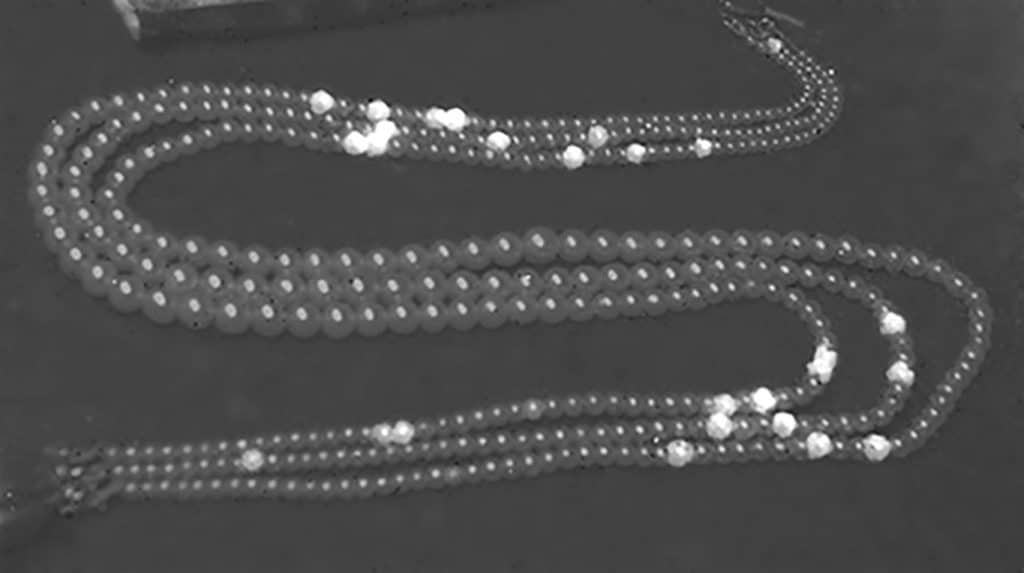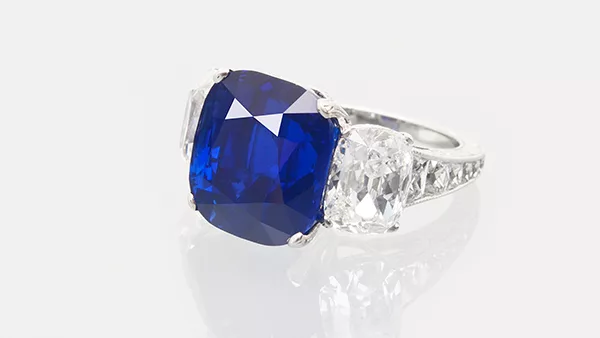
Fake Historic Provenance: ‘Aged ’ Cultured Pearls

by Dr. M. S. Krzemnicki, first published in Facette 25 (February 2019)
Historical age and provenance can have an important impact on the price of pearls. This is best illustrated with the pearl pendant of Marie Antoinette, which sold in November 2018 for the fabulous price of 36 million Swiss Francs at Sotheby’s Geneva.
It is therefore not astonishing, that some innovative treaters are ‘ageing’ pearls with the intent to fool the trade and buyers about its real and recent formation. For paintings and especially for fake antiques, similar ‘ageing’ treatments are well-known in the art trade (see e.g. F. Arnau 1964: Kunst der Fälscher. Fälscher der Kunst. Dreitausend Jahre Betrug mit Antiquitäten. Econ Publisher, Germany).
At SSEF, we have encountered few cases of pearls which had been treated to make them look old and historic. Most recently, we received a pearl necklace with 410 pearls strung on three regularly graduated strands (Figure 1). The pearls were characterized by a beautifully matching colour and a fine pearl lustre, reminiscent of ‘classic’ natural pearls from the Arabian Gulf. However, a closer look using X-ray luminescence (SSEF PearlView) revealed that 28 pearls of the necklace showed a distinct reaction typical for freshwater pearls (Figure 2). A more detailed investigation with radiography further unveiled that they in fact represented beadless freshwater cultured pearls, similar to those produced in Chinese pearl farms in huge quantities. They were mixed (intentionally) into this necklace of saltwater natural pearls.

Under the microscope, these freshwater cultured pearls all showed a slightly corroded surface (Figure 3), as if they had been exposed to an acidic solution to create an ‘ageing’ effect with a cream colour. Trace element analyses (EDXRF) showed not only manganese (993 ppm), strontium (1780 ppm), barium (60 ppm) at levels typical for freshwater pearls, but in addition iron (418 ppm), titanium and copper (both not quantified), which is presumably related to the treatment of these cultured pearls.

In summary, this pearl necklace contained a majority of untreated natural saltwater pearls of cream colour which had been intentionally mixed with a number of freshwater cultured pearls. We assume that these cultured pearls were treated (‘aged’) with the aim to create a uniform necklace of historic look.
Want to learn more about pearls?

Sign up for our free online course: Introduction to pearls


